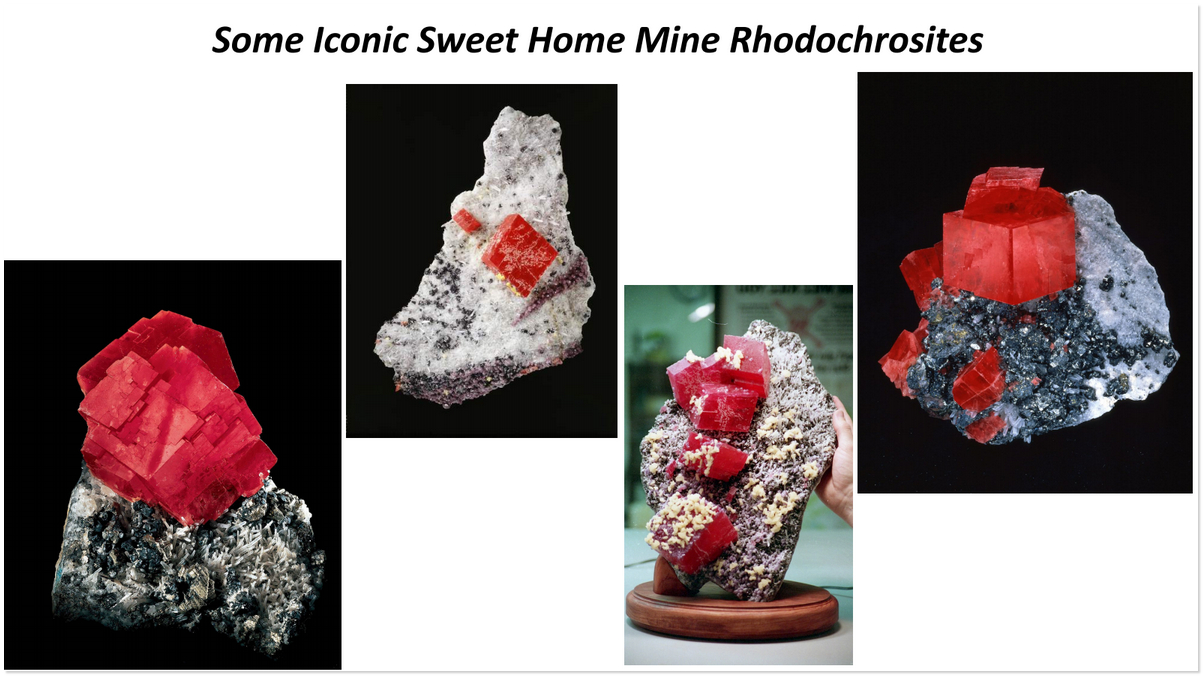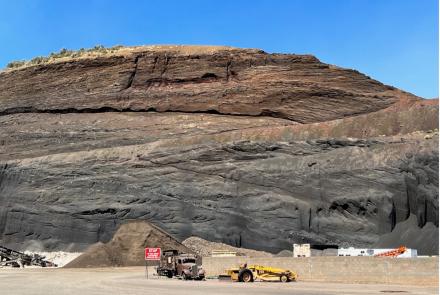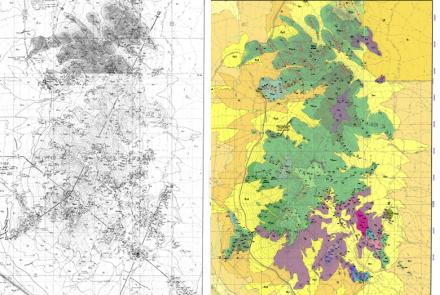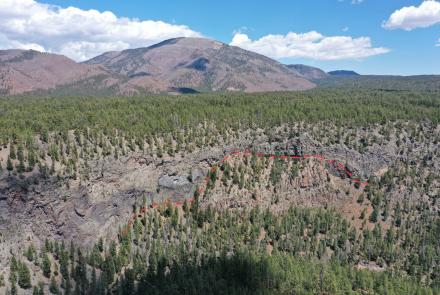Arizona Geological Society: Virtual Presentation on the Sweet Home Mine & Detroit City Portal of Colorado
The Arizona Geological Society’s (AGS) first virtual evening presentation was a smash hit. You can view the entire 55-minute presentation, minus the post-presentation Q&A segment, at the Arizona Geological Survey's Youtube channel.
One-hundred and one people ZOOMED in on the evening of 5 May 2020 to see geologist Phillip Perrson tell the story of the origin and mining history of rhodochrosite and associated Pb, Ag, Zn sulfides, tetrahedrite, and fluorite from Colorado’s renowned Sweet Home Mine and the nearby, newly opened Detroit City Portal.
Representatives from at least six groups joined us, including: Arizona Geological Society (host), Tucson Gem and Mineral Society, Pinal County Gem and Mineral Society, Rocky Mountain Association of Geologists, American Institute of Professional Geologists, and the Colorado Mineral Society.

The Sweet Home Mine was discovered in 1873. Silver, lead and zinc mining prospered for nearly 100 years before the mine closed in 1967. It was reopened in 1991 as a rhodochrosite mineral site and operated till about 2004. Rhodochrosite crystals harvested from the Sweet Home Deposit are among the finest in the world. Gem-quality minerals typically occur along with quartz, sulfides, and fluoride in narrow veins 5-20 cm wide. A rough estimate of sales of rhodochrosite specimens tops $100 M.
For more on the Sweet Home Mine, see the Collector’s Edge Mineral, Inc. ‘Sweet Home Mine, Alma Park County, Colorado’.
From Phillip Perrson’s abstract:
“The epithermal vein-type Ag-Pb-Zn-Cu deposits of the Alma District, including the Sweet Home Mine, are hosted in Proterozoic (~1.7 Ga) metasedimentary rocks of the Idaho Springs group (Mistantoni 1998). Mineralization is coeval with the final stages of magmatic activity associated with the emplacement of shallow-level monzonite porphyry intrusions, including the nearby (~8 km) Climax molybdenum porphyry deposit and the inferred Buckskin stock (Luders et al. 2008). Hydrothermal fluids with both a magmatic component related to late outgassing and fluid exsolution from Climax-style intrusions as well as a meteoric influence were critical in the creation of the Sweet Home and other nearby deposits (Luders et al. 2008).”
‘The Detroit City project is a new (2016) mineral specimen mining venture for world-class rhodochrosite specimens at the Sweet Home Deposit, situated near Alma, Colorado approximately 130 km southeast of Denver. The epithermal vein-type Ag-Pb-Zn-Cu deposits of the Alma District, including the Sweet Home Mine, are hosted in Proterozoic (~1.7 Ga) metasedimentary rocks of the Idaho Springs group (Mistantoni 1998). Mineralization is coeval with the final stages of magmatic activity associated with the emplacement of shallow-level monzonite porphyry intrusions, including the nearby (~8 km) Climax molybdenum porphyry deposit and the inferred Buckskin stock (Luders et al. 2008). Hydrothermal fluids with both a magmatic component related to late outgassing and fluid exsolution from Climax-style intrusions as well as a meteoric influence were critical in the creation of the Sweet Home and other nearby deposits (Luders et al. 2008).’
Acknowledgments. The AGS Executive Board thanks our colleagues at the Arizona Geological Survey for providing logistical support and for publishing a recording of this virtual presentation at their Youtube Channel.
Online Resources
Perrson, P., 2020 (5 May), The Detroit City Portal: New Chapter in the Story of Sweet Home Mine, CO, Rhodochrosite Mining. 55-minute presentation hosted by the Arizona Geological Society.
Collector’s Edge Mineral, Inc., ‘Sweet Home Mine, Alma Park County, Colorado.
Lüders, V. and 5 others, 2009, A geochemical study of the Sweet Home Mine, Colorado Mineral Belt, USA; hydrothermal fluid evolution above hypothesized granite cupola. MinerDeposita(2009)44:415–434.





